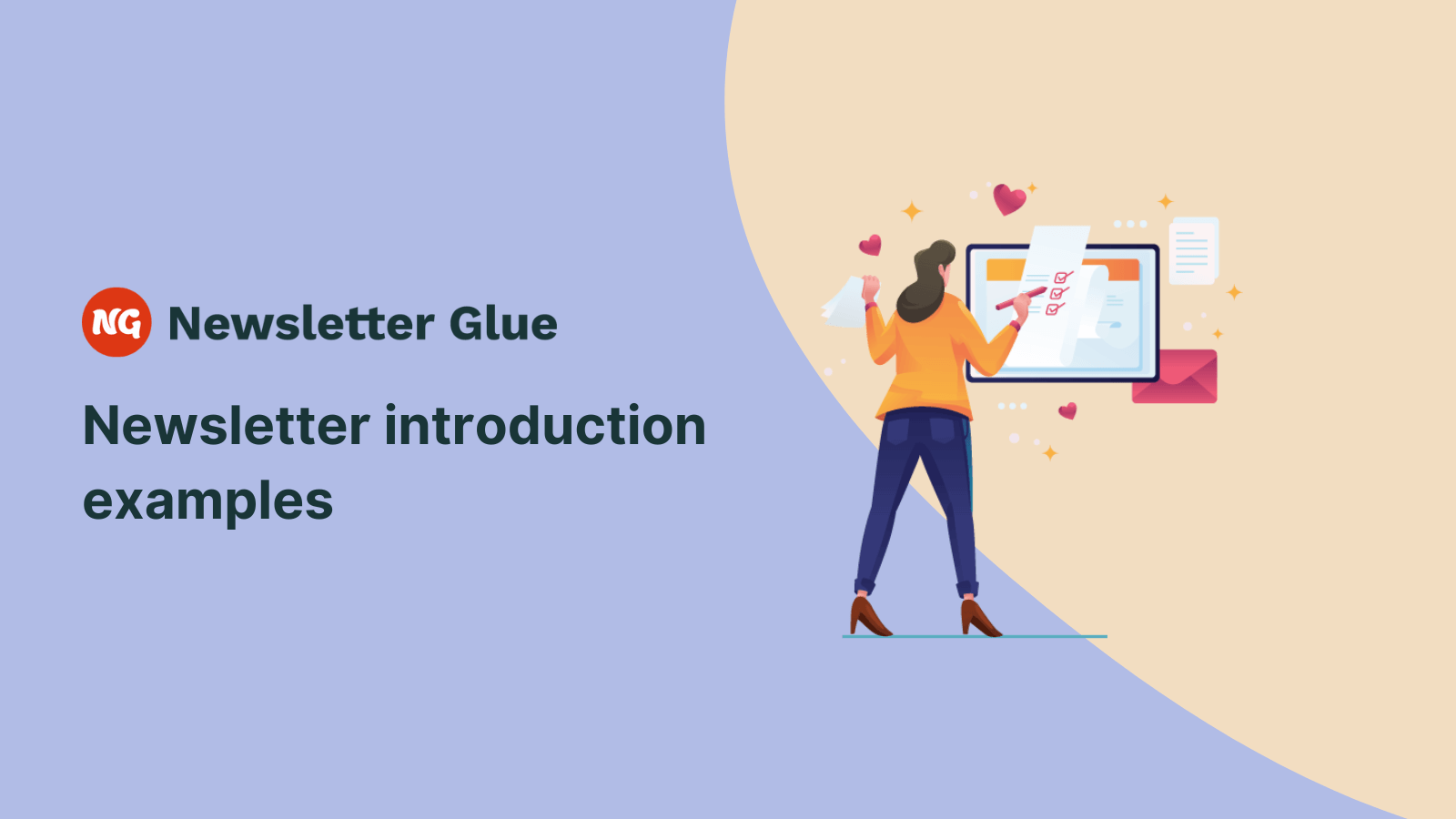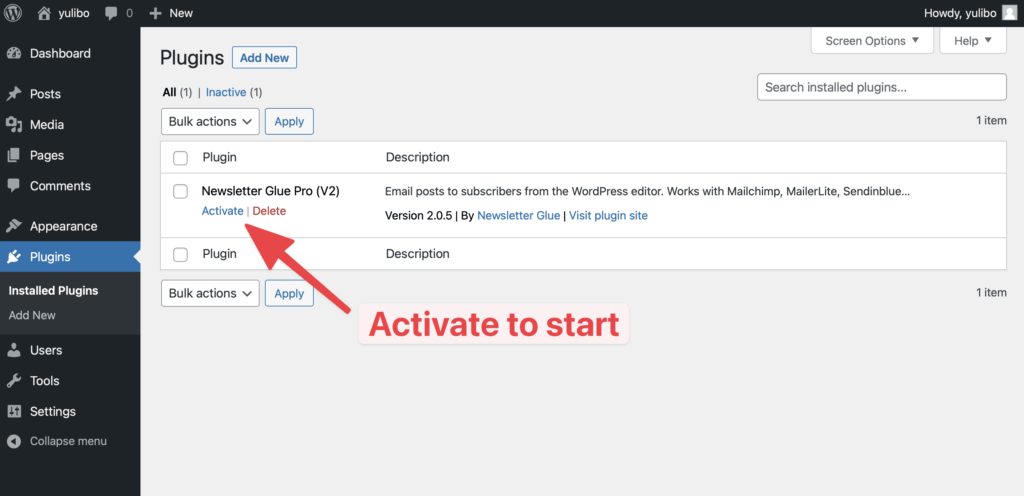Writing an effective newsletter introduction is all about getting a busy, distracted subscriber interested enough to keep reading the rest of your newsletter.
The goal of your first sentence is to get your reader to read the next sentence. If you haven’t hooked them, chances are they’ll stop reading and click on the next email in their inbox. A missed opportunity.
Hence, an awesome newsletter introduction is really important for building engagement, loyalty, and conversions over time.
The problem is that writing a good newsletter intro isn’t always easy. It requires creativity, attention to detail, and some basic knowledge about your audience.
In this article, we’ll give tips on how to write a perfect newsletter introduction and share some real-world examples to get you inspired for your next issue.
Best practices for writing catchy newsletter introductions
1. Be clear and concise
Don’t overwhelm your readers with too much information or bore them with long, rambling sentences.
Think about what you want to say and why your readers would care. Then, get to the point quickly.
If you’re not sure where to start, try writing a list of bullet points or short sentences that capture the essence of what you want to say. Then, flesh out those points with a few more sentences. Once you have a rough draft, go back and edit for clarity and conciseness.
Keep in mind that every audience is different. So, don’t be afraid to experiment with formats and styles until you find something that works for you and your readers.
Real-world example: Brainstorm Force
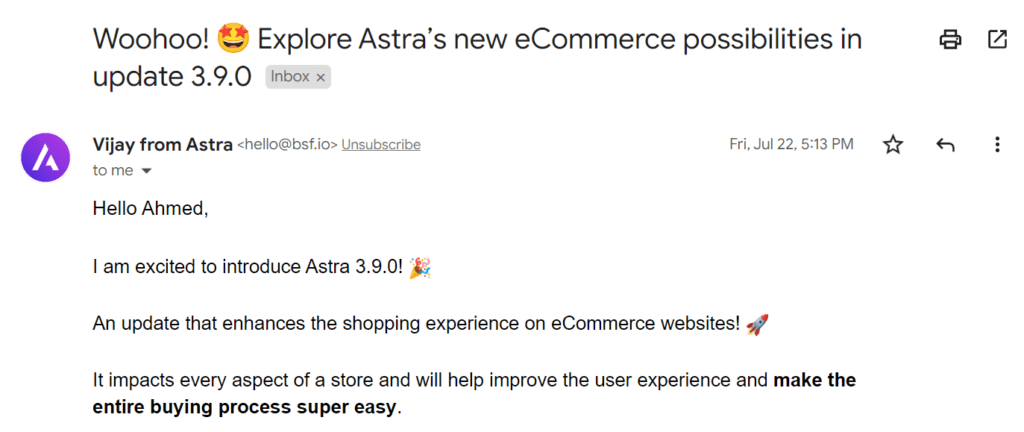
The team at Astra clearly states what the newsletter is about right at the beginning. The second line tells subscribers who this update is for (eCommerce) and the benefits (enhances the shopping experience). The third line goes into a little more detail and reassures the readers that it helps makes things super easy.
This could’ve been a dense paragraph, but Astra manages to fit a lot of key information in just 3 lines.
2. Don’t bury the lede
Everyone’s busy. Tell your subscribers the juiciest bit right at the top to get them hooked. You don’t want to bore your readers and have them give up on your newsletter before they even get to the good stuff.
Burying the lede is a common term in journalism where the most important part of the story is placed at the end or hidden in the middle, instead of summarised at the beginning, where it belongs.
An effective introduction should be short and one that takes readers to the main point of the newsletter before any background information or supporting details.
Real-world example – Jared Newman, advisorator.com
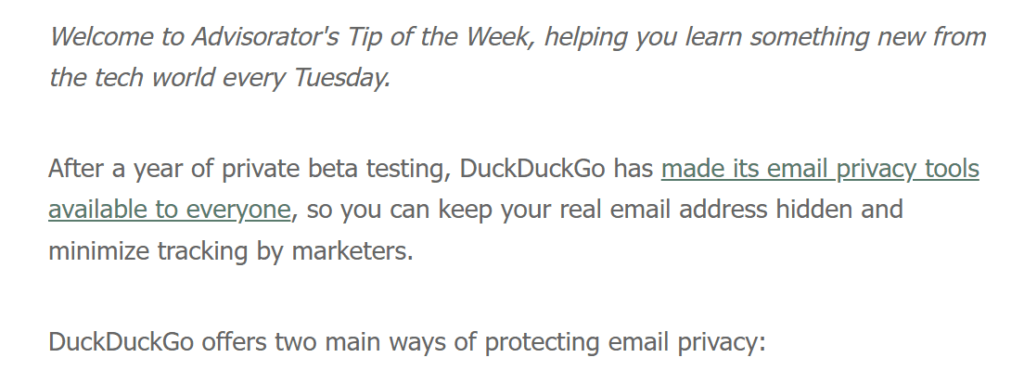
After the first sentence welcome message which stays the same every week, Jared immediately dives into the main point of the email so that you know exactly what the rest of the email will be about (DuckDuckGo’s email privacy tools), in the first 10 seconds of opening the email.
3. Start with a hook
A good newsletter introduction should always start with a hook. This could be an interesting statistic, a personal story, or a question that piques the reader’s curiosity. The goal is to get the reader’s attention and make them want to read more.
Real-world example – Simon Harper, srhdesign.co.uk
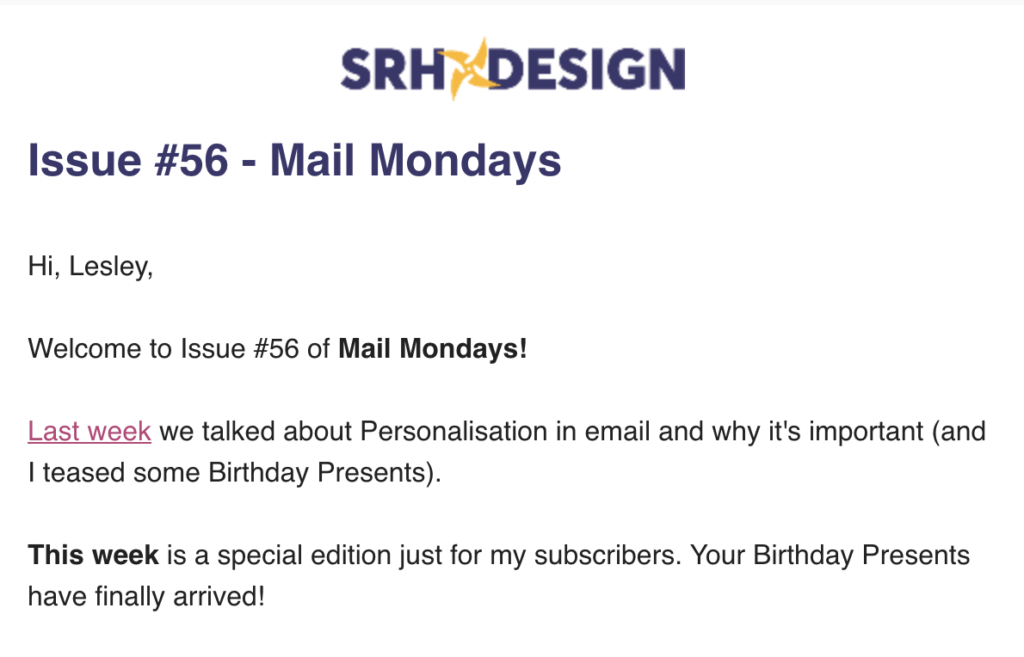
Simon catches the attention by mentioning the birthday presents and then hooks the reader by further telling them that it has finally arrived and that it’ll be something special just for his subscribers. What a great way to entice subscribers to keep reading!
4. Be personal
The best newsletter introductions are personal and make the reader feel like they are part of a community. A good way to start a newsletter introduction is by telling a story that is personal to you and relatable to your reader. This will make your newsletter seem more like a conversation rather than a one-sided broadcast message.
Another tip for writing personal introductions is to address your readers by name. For this, you can use mergetags in your email marketing software to pull the reader’s name into the newsletter automatically.
Real-world example – Viktor, user-interface.io
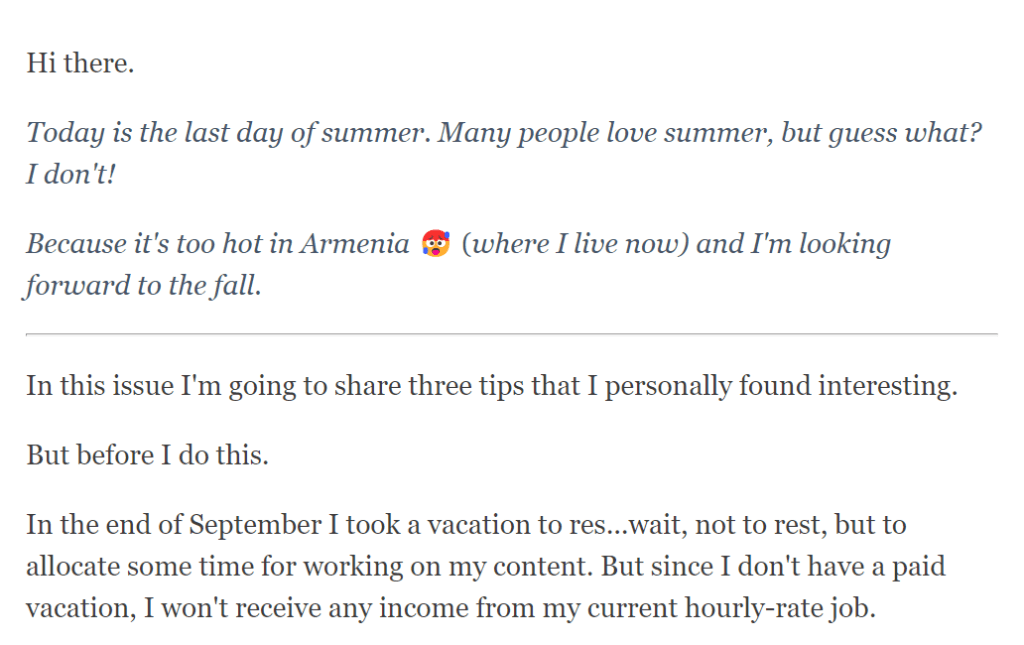
Even though this is a newsletter about user interface design, Viktor starts off by talking about the weather in Armenia and his vacation.
This allows readers to build a relationship with him as a person, rather than just skim his UI tips.
5. Focus on the benefits for the reader
What will they gain from reading the newsletter? Why should they care about what you have to say? What is in it for them? If you can answer these questions in your introduction, you will have a better chance of getting them to read the rest of the newsletter.
By highlighting how the newsletter will improve their life or business, you will immediately capture their attention and interest. In order for them to understand the benefits, be specific and give examples.
Real-world example – MailerLite

In this example, MailerLite clearly states the benefits the readers will get from reading the newsletter, i.e. 19 strategies to increase the conversion rate.
6. Use a consistent one-line summary introduction
People subscribe to more than one newsletter and receive 100 to 120 emails daily in their inbox. When they receive your newsletter, they may not remember why they subscribed to you or what your newsletter is about.
By including a consistent one-line summary introduction at the top of each newsletter, you remind your subscribers what the newsletter is all about and why they’ve subscribed.
Real-world example – Shane Parrish, Farnam Street Brain Food
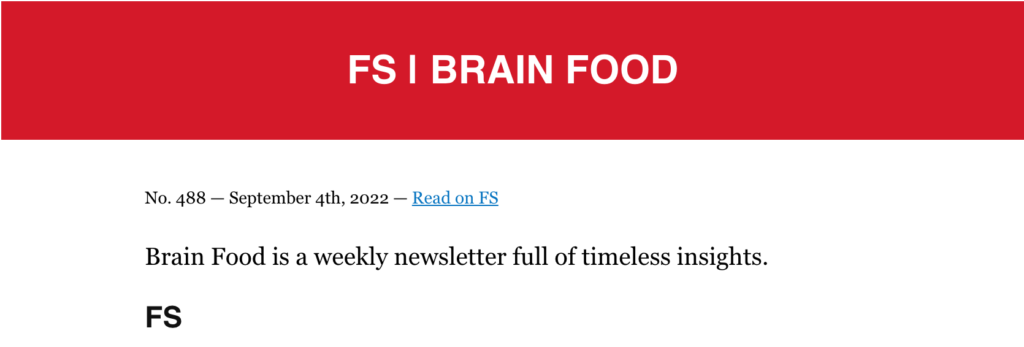
Shane uses a consistent one-liner summary in his weekly newsletter – Brain Food is a weekly newsletter full of timeless insights.
This sets expectations of what the newsletter contains, and how often a subscriber can expect to receive. it.
That’s it! If you follow these best practices, you can be sure that your newsletter introduction will effectively engage readers and encourage them to read the rest of the content.
Takeaway: Email newsletter introductions
Your newsletter introduction is as important as your subject line.
The subject line is the first thing recipients see when they open their inbox, and the introduction is the first thing that they see when they open a specific email.
The newsletter introduction is your opportunity to hook a reader and get them interested to read the rest of your email.
Frequently Asked Questions
Why is the email newsletter introduction so important?
The introduction to your email newsletter is important in setting the tone for the rest of the content. A good subject line catches the reader’s attention, and a good introduction grabs their interest.
It’s the first thing your readers will see after opening the email. It should be engaging and interesting, but most importantly, it should be clear about what the newsletter is about. A good introduction will make it easy for readers to understand what they can expect from the newsletter and will encourage them to keep reading.
How to start a newsletter with an introduction?
You can start a newsletter by introducing the newsletter itself, explaining what readers can expect to find inside, and perhaps providing a brief overview of the main topic of the current issue. You can follow the tips that we’ve shared above to write an eye-catching introduction that’ll hook your readers.
How to introduce yourself in a newsletter?
If you’re writing the introduction for a welcome email, you can start by telling your readers who you are and what you do. This’ll help them connect with you and understand your perspective. Next, tell your readers why you started your newsletter. Finally, end the introduction by encouraging them to reply or ask questions. This will make them feel valued and engaged.

